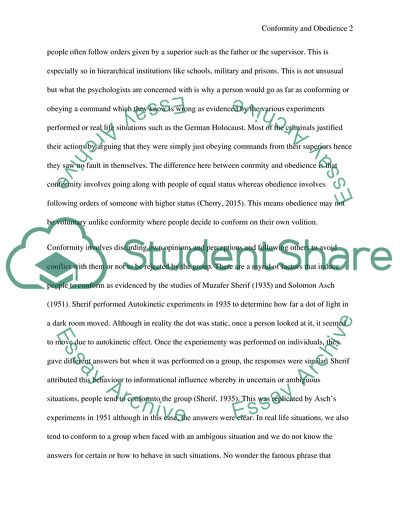Cite this document
(Conformity and Obedience Essay Example | Topics and Well Written Essays - 1250 words, n.d.)
Conformity and Obedience Essay Example | Topics and Well Written Essays - 1250 words. https://studentshare.org/psychology/1878149-which-psychological-factor-exerts-the-greater-force-on-the-individual-conformity-or-obidience
Conformity and Obedience Essay Example | Topics and Well Written Essays - 1250 words. https://studentshare.org/psychology/1878149-which-psychological-factor-exerts-the-greater-force-on-the-individual-conformity-or-obidience
(Conformity and Obedience Essay Example | Topics and Well Written Essays - 1250 Words)
Conformity and Obedience Essay Example | Topics and Well Written Essays - 1250 Words. https://studentshare.org/psychology/1878149-which-psychological-factor-exerts-the-greater-force-on-the-individual-conformity-or-obidience.
Conformity and Obedience Essay Example | Topics and Well Written Essays - 1250 Words. https://studentshare.org/psychology/1878149-which-psychological-factor-exerts-the-greater-force-on-the-individual-conformity-or-obidience.
“Conformity and Obedience Essay Example | Topics and Well Written Essays - 1250 Words”. https://studentshare.org/psychology/1878149-which-psychological-factor-exerts-the-greater-force-on-the-individual-conformity-or-obidience.


